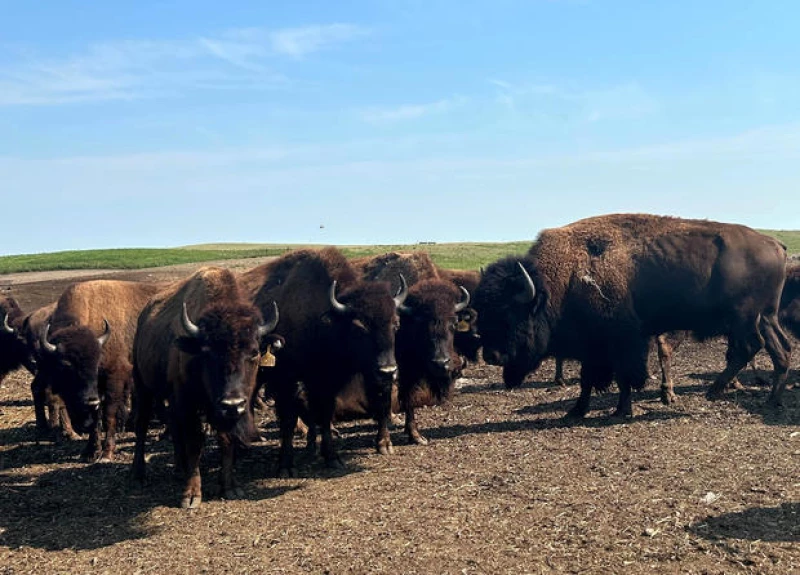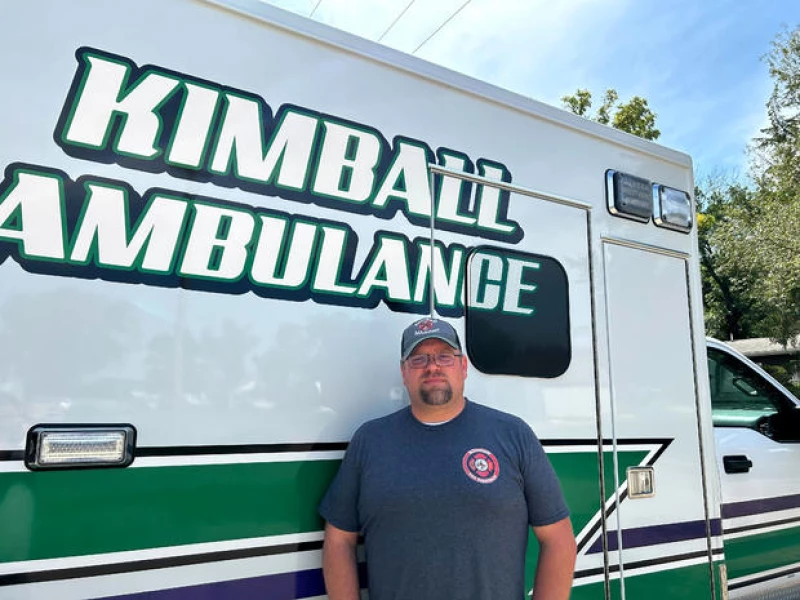Rural Medics Use Telemedicine to Treat Injured Rancher
GANN VALLEY, S.D. — Rural medics who rescued rancher Jim Lutter after he was gored by a bison didn't have much experience handling such severe wounds.
But the medics did have a doctor looking over their shoulders inside the ambulance as they rushed Lutter to a hospital.
The emergency medicine physician sat 140 miles away in a Sioux Falls, South Dakota, office building. She participated in the treatment via a video system recently installed in the ambulance.
"I firmly believe that Jim had the best care anyone has ever received in the back of a basic life support ambulance," said Ed Konechne, a volunteer emergency medical technician with the Kimball Ambulance District.
The ambulance service received its video system through an initiative from the South Dakota Department of Health. The project, Telemedicine in Motion, helps medics across the state, especially in rural areas.
Telehealth became commonplace in clinics and patients' homes during the COVID-19 pandemic emergency, and the technology is starting to spread to ambulances. Similar programs recently launched in regions of Texas and Minnesota, but South Dakota officials say their partnership with Avel eCare — a Sioux Falls-based telehealth company — appears to be the nation's only statewide effort.
Man Survives Bison Attack
Lutter, 67, and his wife, Cindy, are among the 12 residents of Gann Valley, a town just east of the Missouri River in central South Dakota. They operate a hunting lodge and ranch, where they raise more than 1,000 bison.

Last December, Lutter went to check on a sick bison calf. The animal was in the same pen as Bill, a 3-year-old bull that was like a family pet.
"We raised him from a tiny little calf, and I always told everybody he thinks I'm his mother. He just followed me everywhere," Lutter recalled. Lutter climbed into the pen and saw Bill calmly walk toward him.
"What does Chuck Norris say? 'Always expect the unexpected.' Well, I didn't do that. I didn't expect the unexpected," he said.

The bison suddenly hooked Lutter with his horns, repeatedly tossed him in the air, and then gored him in the groin. Lutter thought he was going to die but somehow escaped the pen and found himself on the ground, bleeding heavily.
"The red snow was just growing," he said.
Lutter couldn't reach his cellphone to call 911. But he managed to climb into a front-end loader, similar to a tractor, and drove a few miles to the house of his brother Lloyd.
Jim Lutter's pain didn't kick in until his brother pulled him out of the loader and into a minivan. Lloyd called 911 and began driving toward the ambulance base, about 18 miles away.

Rural ambulance services like the one in Kimball are difficult to sustain because insurance reimbursements from small patient volumes often aren't enough to cover operating costs. And they're largely staffed by dwindling ranks of aging volunteers.
That's left 84% of rural counties in the U.S. with at least one "ambulance desert," where people live more than 25 minutes from an ambulance station, according to a study by the Maine Rural Health Research Center.
Konechne, the volunteer medic, was working his regular job as a hardware store manager when a dispatcher came onto his portable radio with a call for help. He hustled two blocks to the Kimball fire station and hopped into the back of an ambulance, which another medic drove toward Gann Valley.
Lloyd Lutter and the ambulance driver both pulled over on the side of the country road once they saw each other coming from opposite directions.
"I opened the side door of the van where Jim was and just saw the look on his face," Konechne said. "It's a look I'll never forget."

Rural medics often have less training and experience than their urban counterparts. Speaking with a more experienced provider via video gives him peace of mind, especially in uncommon situations. The Kimball ambulance service sees only about three patients a year with injuries as bad as Jim Lutter's.
Katie DeJong was the emergency medicine physician at Avel eCare's telehealth center who took the ambulance crew's video call.
"What? A bison did what?" DeJong remembers thinking.
After speaking with the medics and viewing Lutter's injuries, she realized the rancher had life-threatening injuries, especially to his airway. One of Lutter's lungs had collapsed and his chest cavity was filled with air and blood.
DeJong called the emergency department at the hospital in Wessington Springs — 25 miles from Gann Valley — to let its staff know how to prepare. Get ready to insert a chest tube to clear the area around his lungs, she instructed. Get the X-ray machine ready. And have blood on standby in case Lutter needed a transfusion.
DeJong also arranged for a helicopter to fly Lutter from the rural hospital to a Sioux Falls medical center, where trauma specialists could treat his wounds.
Konechne said he was able to devote 100% of his time to Lutter since DeJong took care of taking notes, recording vital signs, and communicating with the hospitals.
Nurse practitioner Sara Cashman was working at the emergency department in Wessington Springs when she received the video call from DeJong.
"It was nice to have that warning so we could all mentally prepare," a spokesperson said. "We could have the supplies that we needed ready, versus having to assess when the patient got there."

A medical professional inserted a tube into the patient's chest to drain the blood and air around his lungs. Emergency personnel then loaded him into the helicopter, which flew him to the nearest hospital where he was immediately taken into surgery. The patient had multiple severe injuries including a fractured collarbone, 16 broken ribs, a partially torn-off scalp, and a 4-inch-deep wound near his groin.
The patient remained in the hospital for approximately one week and likened the painful wound-packing process near his groin to loading an old-fashioned rifle.
"That's exactly what it was. Like packing a muzzleloader and you take a rod, let's poke that in there," the patient said. "That was just a lot of fun."
The video technology that played a crucial role in saving the patient's life had recently been installed in the ambulance after the launch of the Telemedicine in Motion program in the fall of 2022. The program is funded by $2.7 million from state funds and federal pandemic stimulus money.
The funding covers the provision and installation of video equipment by Avel eCare employees, as well as training for medics on how to use the technology. The company also employs remote healthcare professionals who are available round the clock.
Telemedicine in Motion Expands in South Dakota
Seventy-five out of the 122 ambulance services in South Dakota have already implemented the Telemedicine in Motion technology, with an additional 18 services planning to do so in the near future. Since its introduction, the system has been utilized approximately 700 times.
Avel's contract, the company responsible for providing the technology, is set to expire in April. However, Avel hopes that the state will extend the program into a third year. Once the state funding ends, ambulance services will have to decide whether they want to continue utilizing the video service by paying for it themselves. Patients will not incur any additional charges for the video calls, according to Jessica Gaikowski, a spokesperson for Avel eCare.
KFF Health News, formerly known as Kaiser Health News (KHN), is a national newsroom that produces in-depth journalism about health issues and is one of the core operating programs at KFF — the independent source for health policy research, polling, and journalism.







